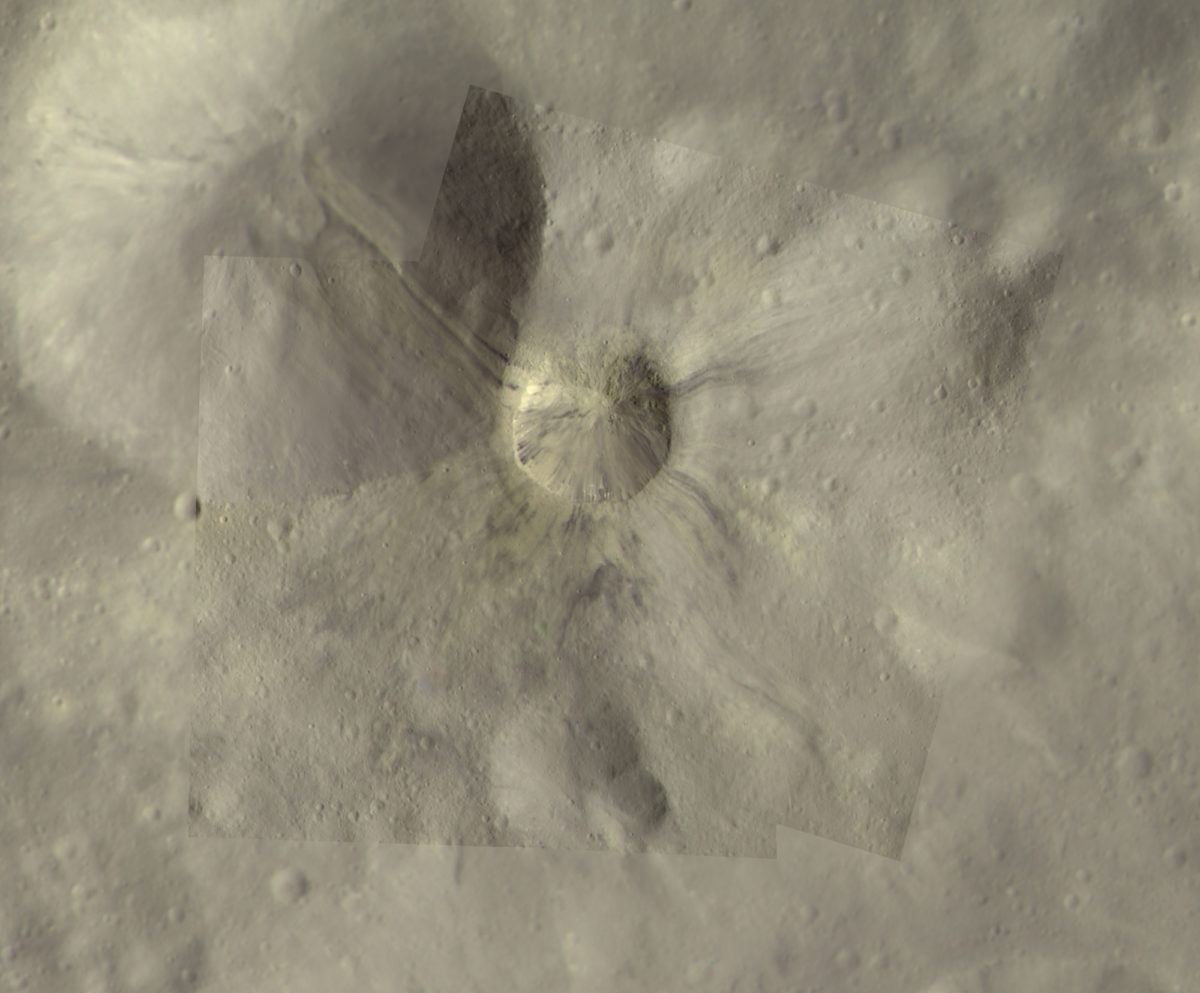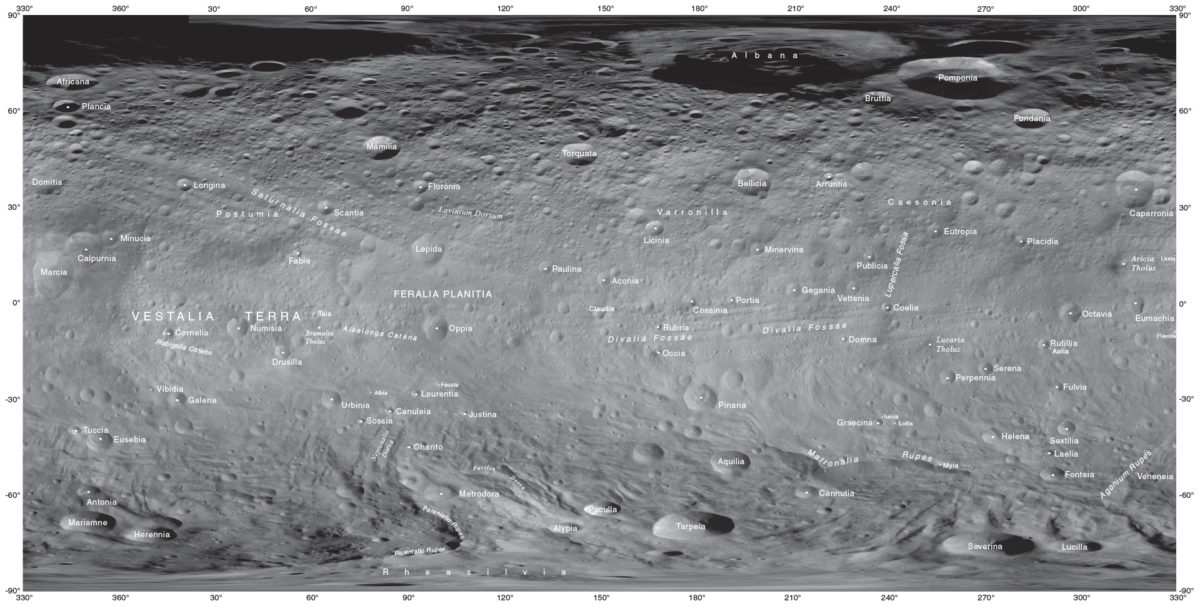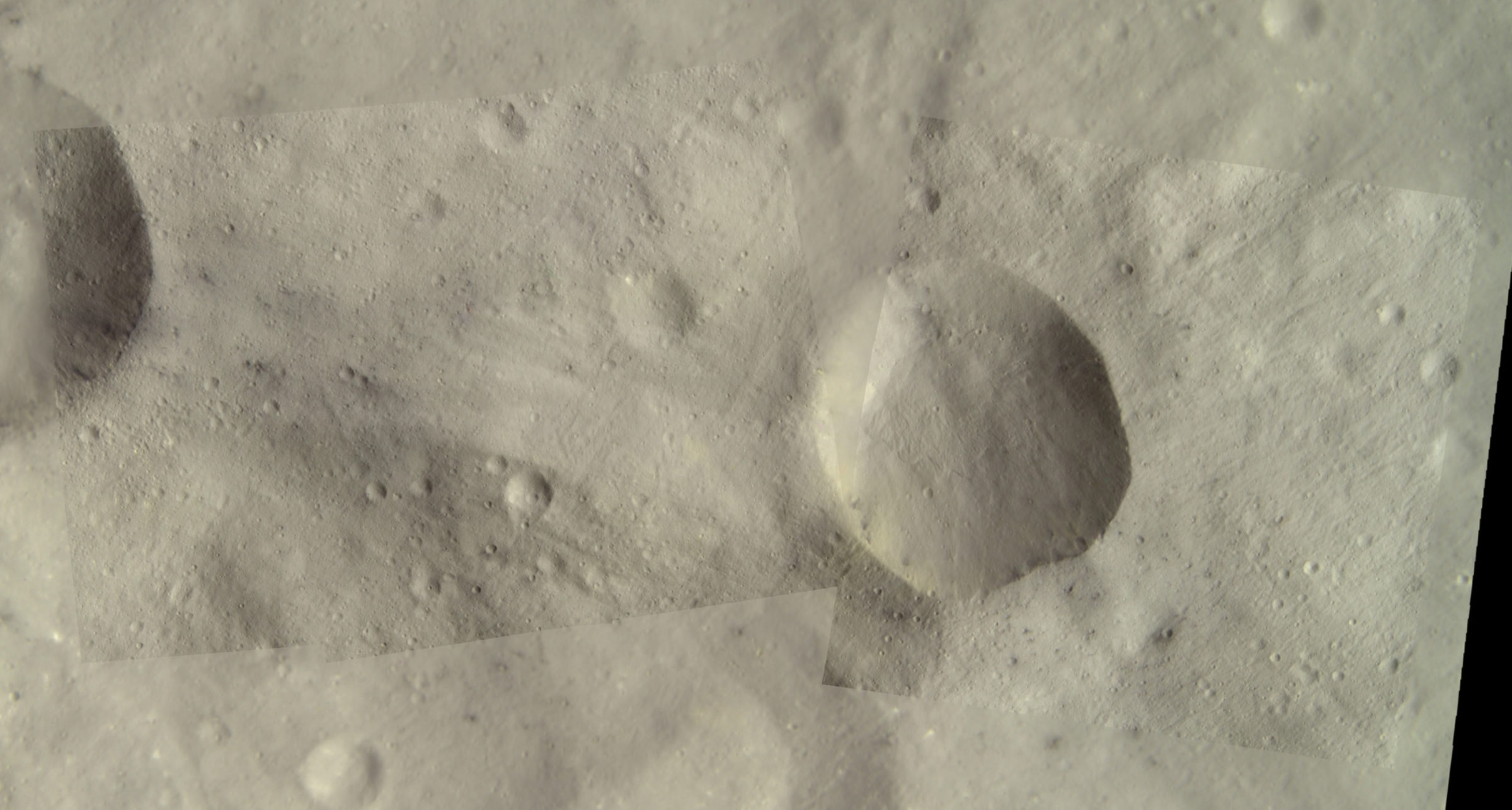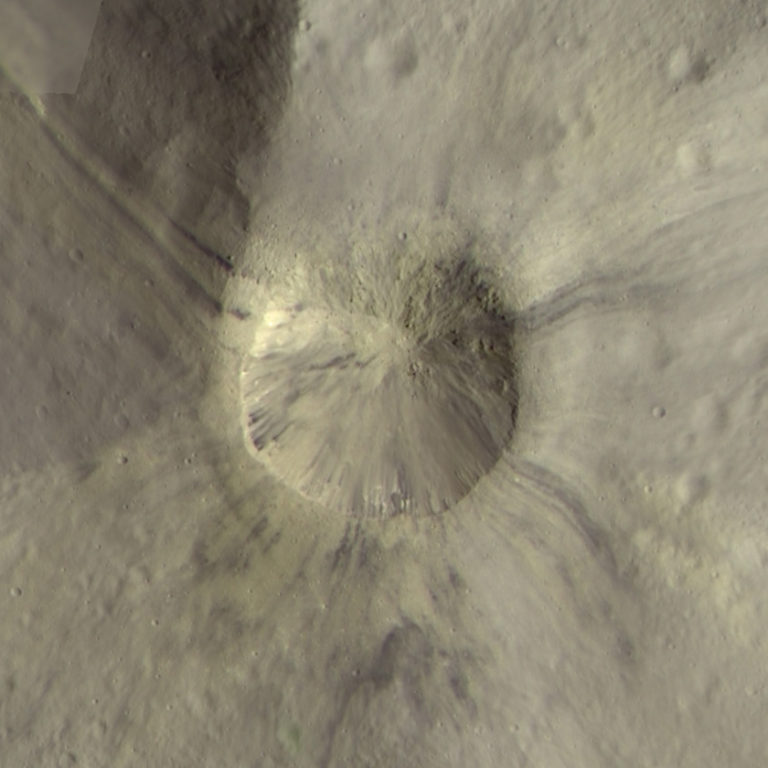Emily Lakdawalla • Sep 05, 2014
Pretty pictures: Vesta's dark material
Ready for more eye candy from the second-largest member of the asteroid belt? Dawn left Vesta behind more than two years ago, but scientists and amateurs both are still hard at work processing all the data. Dawn's images of Vesta are hard for amateurs to work with, because Dawn's perspective on the lumpy asteroid changed continuously. It's difficult to assemble multiple images into color or high-resolution views because the landscape in view changed so rapidly with that shifting view of bumpy terrain. But Björn Jónsson has risen to that challenge, making global mosaics and high-resolution images of cool surface features. I posted his work on Aricia Tholus a while ago; here are two more interesting locations on Vesta. First up: Aelia crater.

There are several cool things about Aelia. The most obvious are the wispy streaks of dark material radiating out from it, onto the Vestan plains in some places and also down the slope of the older Rufillia crater. Let's zoom in to see what else is going on inside the crater:
There are patches of dark material cascading down the walls, but it is very patchy, with those patches located at different depths from the surface. You can also see that the crater has an asymmetrical shape; the southern two-thirds of the crater has a sharp edge and cascaded walls, while the northern third has a rounded edge of disorganized-looking material. That's a common shape for Vestan craters; it's because much of Vesta has very steep slopes. This is an impact that happened on such a slope; downhill is toward the top of the image. Material cascaded down from the high rim and flowed out and over the low rim.
Before I move on to the next spot, I thought I'd share a map of Vesta to help you locate these features. Aelia and Rufillia are near 300°E longitude, just a bit south of the equator.

Most of the dark material on Vesta is associated with impact craters, like Aelia. There are a few places, though, where it's harder to tell exactly what the dark material has to do with impact craters. Here's a spot where there's a spattering of dark material spread across the landscape near some craters. The crater at left is Fulvia; it's south and just a bit east of Aelia.

Did the formation of Fulvia splatter the dark material around? Or not? It's unclear. Let's look closer:
The dark material almost disappears when you look at it this close. It's weird and elusive and has been one of the bigger mysteries of the Dawn mission to Vesta. Some answers are starting to come out, though. An entire special issue of Icarus devoted to the bright and dark material on Vesta has just been published. I'm still digesting the papers, but I'll be writing something about them eventually!
The Time is Now.
As a Planetary Defender, you’re part of our mission to decrease the risk of Earth being hit by an asteroid or comet.
Donate Today

 Explore Worlds
Explore Worlds Find Life
Find Life Defend Earth
Defend Earth



